Sheehan’s Syndrome Caused by Blood Loss During Childbirth
Did you develop Sheehan’s Syndrome as a result of extreme blood loss during or after childbirth? If you experienced severe blood loss and medical professionals failed to take the necessary measures to promote your well-being while you were losing blood or after the blood loss had been controlled, your Sheehan’s Syndrome could be associated with medical negligence. If medical negligence contributed to the harm that you suffered, you will likely have grounds to pursue a medical malpractice claim against the liable parties.
If you developed Sheehan’s Syndrome as a result of medical malpractice, you might have grounds to pursue a claim. It is important that you seek legal assistance immediately to explore the possibility of taking legal action against the parties liable for the harm that you suffered. You should seek legal assistance with the experts at Downtown L.A. Law Group – we are ready to evaluate your claim and fight for your right to recover the compensation that you deserve. We have many years of experience and want to represent you. Do not hesitate to contact us today.
 Sheehan’s Syndrome – also referred to as SS, postpartum pituitary necrosis, postpartum panhypopituitary syndrome, postpartum panhypopituitarism, or postpartum hypopituitarism, for example – occurs as a result of excessive blood loss during or after the delivery of a baby. The bleeding can result in reduced blood flow specifically to the pituitary gland – this can result in the damage or necrosis of the pituitary cells. When this happens, the production of the hormones associated with the pituitary gland will be reduced. The hormones associated with the pituitary include the following:
Sheehan’s Syndrome – also referred to as SS, postpartum pituitary necrosis, postpartum panhypopituitary syndrome, postpartum panhypopituitarism, or postpartum hypopituitarism, for example – occurs as a result of excessive blood loss during or after the delivery of a baby. The bleeding can result in reduced blood flow specifically to the pituitary gland – this can result in the damage or necrosis of the pituitary cells. When this happens, the production of the hormones associated with the pituitary gland will be reduced. The hormones associated with the pituitary include the following:
What is Sheehan’s Syndrome?
 Sheehan’s Syndrome – also referred to as SS, postpartum pituitary necrosis, postpartum panhypopituitary syndrome, postpartum panhypopituitarism, or postpartum hypopituitarism, for example – occurs as a result of excessive blood loss during or after the delivery of a baby. The bleeding can result in reduced blood flow specifically to the pituitary gland – this can result in the damage or necrosis of the pituitary cells. When this happens, the production of the hormones associated with the pituitary gland will be reduced. The hormones associated with the pituitary include the following:
Sheehan’s Syndrome – also referred to as SS, postpartum pituitary necrosis, postpartum panhypopituitary syndrome, postpartum panhypopituitarism, or postpartum hypopituitarism, for example – occurs as a result of excessive blood loss during or after the delivery of a baby. The bleeding can result in reduced blood flow specifically to the pituitary gland – this can result in the damage or necrosis of the pituitary cells. When this happens, the production of the hormones associated with the pituitary gland will be reduced. The hormones associated with the pituitary include the following:
- ACTH (adrenocorticotropic hormone) – stimulates adrenal glands to produce cortisol (helps body deal with stress) and other important hormones necessary for the body’s functions
- GH (growth hormone) – controls bone and tissue growth and maintains a balance between fat and muscle tissue
- LH (luteinizing hormone) – regulates estrogen
- Prolactin – regulates the development of the female breasts and their milk production
- TSH (thyroid-stimulating hormone) – stimulates thyroid gland to produce additional hormones necessary for the regulation of the metabolism
The Signs and Symptoms of Sheehan’s Syndrome
The signs and symptoms associated with are usually mistakenly regarded as normal symptoms after delivering a baby. Although signs and symptoms can appear immediately after delivering a baby, it is possible for symptoms to start appearing immediately. In many cases, the symptoms present themselves slowly over months or years. Sheehan’s Syndrome specifically affects the pituitary gland, which controls the hormones necessary for menstrual function, the production of breast milk, thyroid, and adrenal. This explains the following symptoms of Sheehan’s Syndrome:- Breast shrinkage
- Constipation
- Difficulty with or the inability to breast-feed
- Dry skin
- Fainting
- Fatigue
- Inability to re-grow pubic hair (after removing it by shaving, etc.)
- Inability to respond to stress
- Irregular/fast heartbeat (tachycardia)
- Low blood pressure (hypotension)
- Low blood sugar (hypoglycemia)
- No menstruation or sporadic menstruation (amenorrhea or oligomenorrhea respectively)
- Slowed mental function, weight gain, difficulty or inability to stay warm (hypothyroidism)
- Abnormal thirst, abnormal intake of water, high volume of urine being produced (diabetes insipidus)
The Causes of Sheehan’s Syndrome
Sheehan’s Syndrome is caused by excessive blood loss or severe low blood pressure during childbirth or after childbirth. The loss of blood flow to the pituitary gland can be very damaging, resulting in the destruction of important tissue necessary for hormone production. When this tissue is damaged, whether partially or completely, it stops functioning properly and leads to a variety of issues directly associated to hormones. This could result in issues with breast milk production, fertility, blood pressure, and the metabolism, among others. Is there anything that increases the risk of developing Sheehan’s Syndrome? Any pregnancy-related condition that increases the possibility of hemorrhage or low blood pressure during childbirth significantly increases the risk of developing Sheehan’s Syndrome. Although the risk of hemorrhaging and extreme blood loss is rare, it is possible; with care and monitoring during and after childbirth, the risk of hemorrhaging and developing Sheehan’s Syndrome can be reduced.Find out more about how we can help you. Call (855) 339-8879 to speak with a representative now.
The Complications Associated with Sheehan’s Syndrome
Without a doubt, Sheehan’s Syndrome could result in a number of complications, which can include irregular menstruation, unintended (and sometimes extreme) weight loss, and low blood pressure. One of the most dangerous complications associated with Sheehan’s Syndrome includes adrenal crisis. During an adrenal crisis, the adrenal glands do not produce enough cortisol (a stress hormone). Adrenal crisis can be life-threatening and sudden. It could lead to critically low blood pressure, shock, coma, and – in the most severe cases – death. Adrenal crisis occurs when the body is under stress (during illness or surgery, for example) and the body fails to produce enough cortisol. Some of the symptoms associated with adrenal crisis could include some of the following: coma; confusion; loss of consciousness; dehydration; dizziness; fatigue; severe weakness; loss of appetite; headache; fever; nausea/vomiting; low blood pressure; rapid heart rate; rapid respiratory rate; excessive sweat on palms/face. If the adrenal crisis is not addressed promptly, it can quickly become life-threatening.Example of Sheehan’s Syndrome and a 15-Year Delay in Diagnosis and Treatment
One woman lived with Sheehan’s Syndrome for 15 years before she finally got the diagnosis and treatment that she needed so desperately. The patient had a 15-year history of anorexia, vomiting, and lethargy that began just a few months after her third and last pregnancy. She had spent many years going to doctors and all sorts of specialists seeking relief from her multiple symptoms. All treatment she received was symptom-driven; therefore, treatment managed her symptoms but provided no long-term relief. Eventually, she developed back pain that resulted in a stooping posture and limited mobility. This was identified as osteoporosis which required multiple surgeries to treat; again, relief was short-term. She also developed hypotension, hypoglycemia, and hyponatremia – all of which required lengthy hospital stays at one point or another. The woman did not receive a diagnosis or the treatment that she required until after being transferred to an endocrine clinic from an ICU of another hospital (where she was being treated for a lower respiratory infection that was complicated by hyponatremia (a symptom of Sheehan’s Syndrome). Even though the woman was experiencing premature osteoporosis, hyponatremia, hypoglycemia, and other medical problems associated with Sheehan’s Syndrome, she never received a diagnosis. The woman was not provided the necessary guidance immediately after the blood loss she suffered during her last delivery of a child. She lived with symptoms for many years before reaching out to medical professionals – all of which failed to look for the causes of the symptoms and instead just attempted to manage the symptoms. After her diagnosis of Sheehan’s Syndrome, the woman began treatment immediately. Her health improved drastically in just two weeks. More specifically, within just two weeks of her diagnosis and starting the appropriate treatment, she was no longer experiencing hyponatremia or hypoglycemia. Three months later, she continued to improve significantly – she even regained the mobility that she had once lost. The delay in diagnosis and treatment resulted in expensive medical costs (the woman’s family had spent approximately $10,000 in treatment that wasn’t working, which decreased to $14 a month with the correct diagnosis and treatment). The delay in diagnosis and treatment also resulted in a social, psychological, and physical burden on the woman and her entire family. All of this suffering could have been avoided if she had just received the correct diagnosis and treatment 15 years earlier. More information about the woman with a 15-year delay in her diagnosis and treatment of Sheehan’s Syndrome can be found here.Is Sheehan’s Syndrome associated with Medical Malpractice?
Sheehan’s Syndrome occurs during severe blood loss during or after childbirth. With the proper attention, the blood loss can be immediately addressed to prevent further damage. Although some blood loss during and after childbirth is normal, severe blood loss can quickly become dangerous. Women can develop Sheehan’s Syndrome. Without the proper follow-up care and monitoring, symptoms associated with Sheehan’s Syndrome can take over and even become life-threatening. In general, a quick diagnosis and treatment of the syndrome results in an efficient recovery with no major complications. Considering this information, can the Sheehan’s Syndrome that you developed be considered to be medical malpractice? Medical malpractice occurs when medical professionals fail to take the proper care towards their patients. All medical professionals (including nurses and doctors) have a duty of care towards their patients. They must exercise care, skill, and diligence towards their patients. When they breach their duty towards their patients and fail to exercise care, skill, and diligence, they are essentially putting their patients at risk of suffering preventable harm. As previously mentioned, Sheehan’s Syndrome is associated with blood loss during pregnancy. By failing to control a hemorrhage, failing to give the patient a blood transfusion, and failing to follow-up with the patient to check whether the blood loss affected her overall health, medical professionals are breaching their duty of care towards their patients. By failing to run the necessary tests to look for the causes of specific symptoms (or just focusing on short-term relief of symptoms instead of finding the real issue causing the symptoms), medical professionals are breaching their duty of care towards their patients. By failing to diagnose and failing to treat a condition in which all symptoms are present, medical professionals are breaching their duty of care towards their patients. Yes; Sheehan’s Syndrome could be associated with medical malpractice. Medical professionals failed to provide you with the care that you needed; therefore, you developed Sheehan’s Syndrome. Instead of a quick diagnosis that would have likely resulted in efficient treatment, you were forced to deal with the different symptoms and complications of Sheehan’s Syndrome without any real solution. If you believe that the Sheehan’s Syndrome that you developed is directly associated to medical negligence (malpractice), you should explore the possibility of filing a medical malpractice claim against the medical professionals that contributed to the harm that you suffered.Can Women with Sheehan’s Syndrome Pursue Claims?
Can you take legal action against a doctor or hospital because of your Sheehan’s Syndrome? Depending on the details of your current situation, you might have grounds to pursue a claim. Specifically, you could be eligible to file a claim if the Sheehan’s Syndrome was a direct result of the negligence of the medical professionals that were supposed to be caring for you during your pregnancy and delivery (providing you with the appropriate after-care). As discussed above, medical professionals have a specific duty of care towards all their patients. By failing to exercise the level of care necessary to preserve your health and wellbeing, they are breaching their duty of care towards you, and they are putting you at serious risk of suffering harm. If the medical team that was supposed to be caring for you negligently contributed to the harm that you suffered, you could pursue a claim – depending on the details of your claim, you could also recover compensation.Can You Recover Compensation?
Could you recover monetary compensation the Sheehan’s Syndrome that you developed after you lost a dangerous amount of blood lost during or after the delivery of a baby? If the harm that you suffered can be directly associated with a breached duty of care or with the negligent actions of alleged medical professionals, you will likely be eligible to receive at least some sort of compensation? How much compensation could you receive? How much could your claim be worth? What type of compensation could you be eligible to recover? The answers to any questions that you might have related to the compensation that you could receive can generally only be answered by an experienced attorney, since they are so case-specific. Although every claim is different, some of the compensation available for recovery could include the following:- Medical expenses – for all the costs associated with treatment of the medical condition
- Lost income – for all the wages that were lost as a direct result of the victim developing the medical condition
- Pain and suffering – for the mental and emotional distress associated with the harm the victim suffered and will continue to suffer due to the development of the syndrome
- Loss of consortium – for the lost ability to have a normal, loving relationship with the victim as a result of the harm she suffered
- Funeral and burial costs – for the expenses associated with general services after the death of the victim, awarded to surviving family members
- Punitive damages – for punishment towards defendants
What Should You Do?
Losing blood during or after delivering a baby, without a doubt, could make you feel unwell. Unfortunately, many mothers put their health and wellbeing on hold while they dedicate themselves in full to their new baby. Follow-up medical appointments are usually focused on the infant; therefore, any care that mothers require can easily go ignored. In many cases, the symptoms associated with Sheehan’s Syndrome are disregarded as normal symptoms associated with pregnancy. If you believe that you developed Sheehan’s Syndrome due to blood loss during or after delivering a baby, you should do the following:- Seek medical attention
- Do not be afraid to get a second or third opinion from a medical professional
- Keep track of all your symptoms
- Keep records of the doctors you see and the treatment you receive
- Gather records of any official diagnosis you receive
- Seek legal assistance immediately
Learn more about your legal options: call (855) 339-8879 to speak with a representative now.
If you believe that your Sheehan’s Syndrome can be associated with medical malpractice, you might have grounds to pursue a claim. For more information about the action that you should take, do not hesitate to seek legal assistance with our experts today.How Long Do You Have to Pursue a Claim?
Although it is possible that you could pursue a claim (based on the specific circumstances surrounding the harm that you suffered), you could lose your right to sue if you fail to act within the appropriate length of time. All claims, including medical malpractice claims, are subject to deadlines which are also known as statues of limitations. A statute of limitations determines the specific length of time that claimants have to file their claims. When claimants fail to file their claims within the appropriate deadline, they will lose their right to sue – which means that they will lose their right to receive compensation. What statute of limitations applies to your claim? In California (based on section 340.5 of the Code of Civil Procedure), medical malpractice claims can be subject to one of two deadlines. Claims must be brought forward within one year of the discovery of the injury or within three years of the injury (which ever deadline comes first). Are you willing to risk your right to sue based on a failure to understand the specific deadline that applies to your claim? To ensure that you have a thorough understanding of the deadline that applies to your claim, do not hesitate to contact our law firm today.Seek Legal Assistance Today
If you are considering the possibility of pursuing a medical malpractice claim in associated with your Sheehan’s Syndrome, it is important that you seek legal assistance as soon as possible. You could trust the experts at Downtown L.A. Law Group. Downtown L.A. Law Group is a personal injury law firm with many years of experience handling a variety of cases, including medical malpractice cases. If you believe that your medical team failed you by failing to provide you with the necessary care and information after your blood loss during and after childbirth, you could take legal action for your development of Sheehan’s Syndrome. Our firm offers free legal services and free second opinions to all parties interested in taking legal action against other parties (or entities) that negligently contribute to the harm that they suffered. During our free consultations and free second opinions, our lawyers will be available to answer all questions and address all concerns; our lawyers will be available to provide you with all the information that you need to start or continue your claim. If you would like to benefit from either of these free legal services, do not hesitate to contact our firm. Our legal services are free as part of our Zero-Fee guarantee which ensures that our clients never have to worry about paying any upfront legal fees. Our firm is also based on contingency; therefore, our clients will only be required to pay for legal expenses until after their claims reach successful outcomes – if you do not win, you will not pay anything. We know that making the decision to pursue legal action could be difficult. After all, you and your family have dealt with enough. At Downtown L.A. Law Group, we handle every aspect of your case so that you can focus on moving forward with your life and putting this traumatic experience behind you. If you are ready to discuss your Sheehan’s Syndrome medical malpractice claim with our experts, do not hesitate to contact our law firm as soon as possible.
By submitting this form, you agree to receive telephone calls and text messages at anytime, which include hours outside of business hours (8:00 am PST – 9:00 pm PST). This is so that we may reach you as soon as possible in order to consult on your potential case.


















